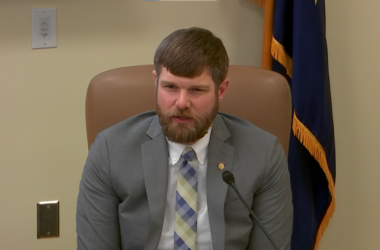According to the University of Alaska Fairbanks Geophysical Institute, aurora borealis displays will be lighting up Friday and really ramp up Sunday.
Omega Smithwith the UAA Planetarium…
Smith: “There’s always going to be activity when the sun’s more active, so a really neat website to go to is spaceweather.com, they can actually detect when solar flares or CMEs come out of the sun and you’ll get a 24-48 hour notice and then you’ll see if aurora shows up, they’ll actually predict when aurora’s happening.”
Recently the sun’s largest sunspot recorded over the last two decades rotated out of Earth’s view but not before it produced four powerful flares in four days, along with countless smaller ones.
The huge sunspot, named AR2192, is unique because despite the large flares, it did not send out any coronal mass ejections (CMEs) which are plasma energy waves usually associated with flares.






